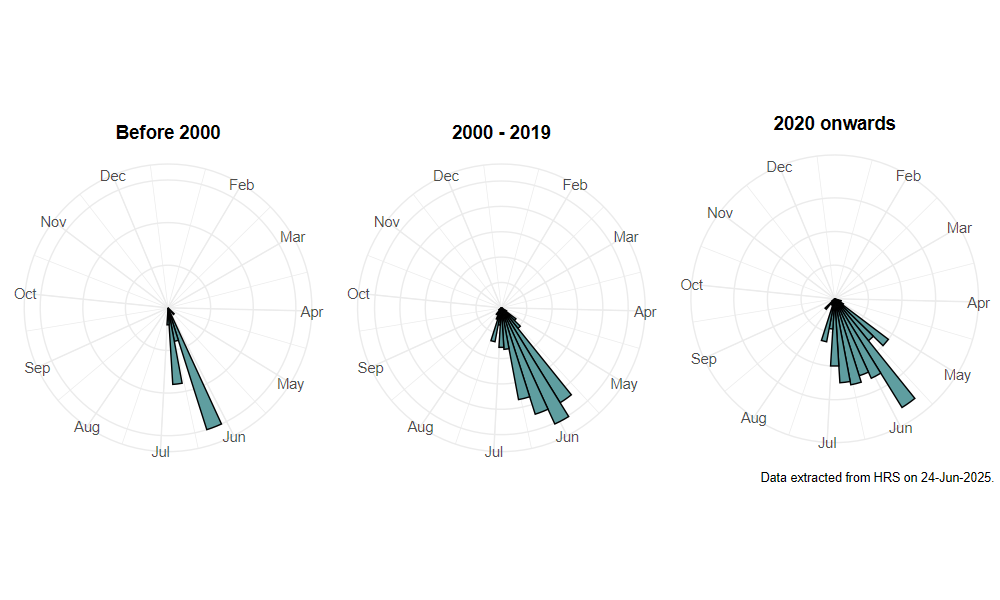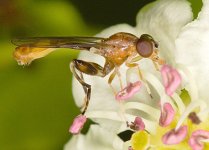Sphegina sibirica Stackelberg, 1953
Identification
Identification difficulty = 3. ![]()
![]() according to Ball & Morris, 20241
according to Ball & Morris, 20241
Biology
Larva unknown, but females have been observed ovipositing on the underside of a cut Spruce Picea trunk lying across a stream (Speight, 2017)2. In continental Europe, adults are found in Picea forests along the edges of paths and streams, where they often hover around freshly cut logs (Speight, 1988)3. The majority of records in Britain come from grassy areas and stream-sides in or near conifer plantations. However, it has been found in mountain passes in Scotland, including well above the tree line near the top of Cairngorm, and also on Skomer Island. This suggests that it is highly mobile and can occur well away from potential breeding sites.
Flight period
The following plots show the number of unique records per week excluding those reported to be of immature stages.

Distribution
First detected in north west Scotland in 1991 (Stubbs, 1994)4, it has spread rapidly throughout the west of Britain. There are recent records from Dorset and Sussex (Edwards, 2004)5, so it now appears to be moving eastwards. It is therefore a species that needs to be borne in mind when recording from conifer woodlands throughout Britain.

Trends
The following plots show the Frescalo TFactor vs year and a map of the rescaled frequency (all records) for the species.
-
Ball, S., & Morris, R. (2024). Hoverflies of Britain and Ireland. WILDGuides (3rd ed.). Oxford: Princeton University Press. ↩
-
Speight, M. (2017). Species accounts of European Syrphidae ( No. 97). yrph the Net, the database of European Syrphidae (Diptera) (p. 294). Dublin: Syrph the Net publications. Retrieved from https://pollinators.ie/wordpress/wp-content/uploads/2018/05/StN-2017-Species-Accounts.pdf ↩
-
Speight, M. (1988). Syrphidae known from temperate Western Europe: potential additions to the fauna of Great Britain and Ireland and a provisional species list for N. France. Dipterists Digest (first series), 1, 2–35. ↩
-
Stubbs, A. (1994). Sphegina (Asiosphegina) sibirica Stackelberg, 1953, a new species and subgenus of hoverfly (Diptera, Syrphidae) in Britain. Dipterists Digest (Second Series), 1, 23–25. ↩
-
Edwards, M. (2005). Sphegina sibirica Stackelberg (Diptera: Syrphidae) in west Sussex. British Journal of Entomology and Natural History, 17(4), 11. ↩
